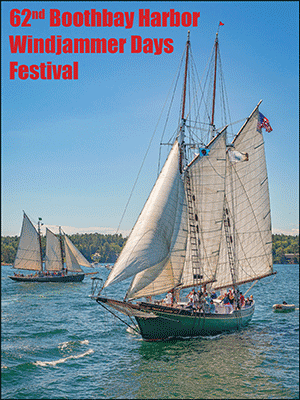Are we in alewife denial?
What is it about alewives? In a recent letter (Sept. 15), several Camden residents object to restoring sea-run fish passage in the Megunticook River. They say that no “historical record” shows alewives were ever there. And what, they ask, would be the “economic advantage in rerouting the Megunticook”?
Let’s start with the historical record. Not long ago, the same group claimed that pre-colonial Indigenous people didn’t settle along the river because it was uninhabited by alewives and other sea-run fish, a major food source. (At the time, the river connected a series of ponds because Megunticook Lake hadn’t been formed yet.) No Indigenous settlements, no alewives, no fish passage to restore.
This is wrong. We asked Dr. Arthur Spiess, Senior Archaeologist at the Maine Historical Preservation Commission, about Indigenous settlements in our area.
“There are two pre-European Native American sites yielding stone tool fragments on the shores of Megunticook Lake,” he told us. “Definitely pre-European Native American use of the lake.”
At least one local landowner reports the remains of a settlement where, “the pre-dam river flowed past our property in pretty much the same configuration as it does now.”
Dr. Spiess explained why Native American sites here are hard to find: “Raised water levels in the lake have probably inundated the original shoreline…Somewhere around the lake shore (or submerged and eroded) there should be more substantial sites.”
According to local chronicler Barbara Dyer, the first dam in Camden was built in 1771 above the harbor, followed by more than a dozen others in the 19th century. For 225 years, then, these dams blocked sea-run fish from spawning upstream in the river and lake.
Beginning in 1794, the state Legislature became worried about preserving Maine’s fish runs. For the next quarter century, it ordered all coastal towns including Camden to provide adequate passage for alewives and other species. Camden officials apparently ignored these orders. But why would legislators persist for so long if the fish were never here?
As for rerouting the Megunticook River: The Olmsted Brothers moved the original channel in 1930-1931 to extend Harbor Park. We checked topographical survey data along the old channel, starting from the low tide mark up to the river bed behind Montgomery Dam. This channel follows a slope of less than 7 percent. Scientists calculate that at least 40 percent of alewives would have scaled that incline to reach their spawning grounds. It would have been an easy climb.
What “economic advantage” would a restored river bring? Let’s look at the question from a different angle. What benefit would another 300,000 alewives a year give the commercial herring fishery and lobster industry? Why would Camden want to attract the thousands of tourists who follow the “Alewife Trail” in other towns? For answers, check “dam removal in Maine” on the internet.
Finally, the recent letter grossly misstates what federal engineer Matt Bernier told Camden residents about flood control at a recent public meeting. Did Bernier really say that dams on the Megunticook River don’t cause flooding?
Here’s a summary of his remarks provided by the Town’s Megunticook River Citizens Advisory Committee, which sponsored the meeting: “These dams were not built to (and do not currently) provide flood control and storage. They raise water levels upstream from the dam, which expands the flood zone above the dam and can make flooding worse.”
You be the judge. The summary and Bernier’s recorded presentation are available on the Town website under “Megunticook River Project Updates.” You can also find a selection of key newspaper and magazine articles about dam removals in Maine.
It’s time to put aside alewife denial and flood denial and history denial. Our community faces a once-in-a-lifetime opportunity to fix serious problems – real problems – using federal money.
The Megunticook River Citizens Advisory Committee was appointed to examine these problems in detail and recommend solutions. Nobody is doing anything behind our backs. Let’s see what they come up with and then put it to a vote.
Signed:
Tony Grassi
Robin Harlow
Bruce Meyer
Barb Ohland
Susan Reider
Stephanie Smith
Rob Wasserstrom


































